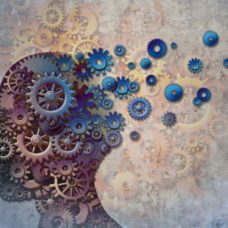Two separate neurological breakthroughs shed light on the secrets of how our brain functions.
As complex as it looks to be, the brain is built on a very organized architecture.
In a relatively small real-estate, the compartmented structure of the brain makes room for several parts and regions, each with its specific functions, while also coordinating their action through neural connections.
Thanks to a number of neurological breakthroughs, neuroscientists are zooming in on the brain’s different parts and giving new insights about cerebral mechanisms in learning, decision-making and more.
Paraventricular Thalamus, the Learning Gatekeeper
The paraventricular thalamus (PVT) is a cluster of neurons in the hypothalamus that is largely responsible for tasks like regulating appetite and emotions. It’s also responsible for other circadian rhythms with the help of PVT hormones.
But the role of PVT in learning remained a mystery, until now.
In a new study, biologists at Stanford University found that PVT helps humans and animals decide what to learn by serving; “as a kind of gatekeeper, making sure that the brain identifies and tracks the most salient details of a situation.”
“We showed thalamic cells play a very important role in keeping track of the behavioral significance of stimuli, which nobody had done before,” said senior author Xiaoke Chen.
According to researchers, the control of PVT could help to modulate learning. It could also help in drug treatment by aiding addicts in “unlearning” the association drugs and the high.
Read More: IPS Cells Could Make Artificial Brains a Future Reality
The Cerebellum, the Brain’s Quality Control Unit
Located below the brain, the cerebellum regulates sensory and motor functions. It mainly controls our movement, balance, and posture.
It’s thanks to the cerebellum that you can walk or ride a bike. From a pure design perspective, it makes sense.
The cerebellum lies right beneath the “cerebrum“, also known as the brain. In this way, every signal between the brain and body passes through it.
In addition to humans, the brains of fish and lizards also contain a cerebellum. However, according to a new study from Washington University in St. Louis, “in the human brain, this structure is wired to areas involved in higher-order thinking”.
Research-wise, the role of the cerebellum remained confined to sensory-motor function, but the WUSTL team think it acts “as the brain’s ultimate quality control unit” and it’s involved “in everything from language and emotions to daily planning.”
The cerebellum doesn’t directly monitor the motor function. However, it does have an indirect action on thinking by monitoring the areas involved in movement and enhances their performance.
According to Washington University neuroscientists, this explains why alcohol affects our judgment as well as our movements.
“We have an explanation for all the bad ideas people have when they’re drunk. They’re lacking cerebellar editing of your thoughts.”
By controlling the cerebellum’s function, scientists hope they can treat a host of psychiatric disorders, from schizophrenia and depression to OCD.













Comments (0)
Least Recent